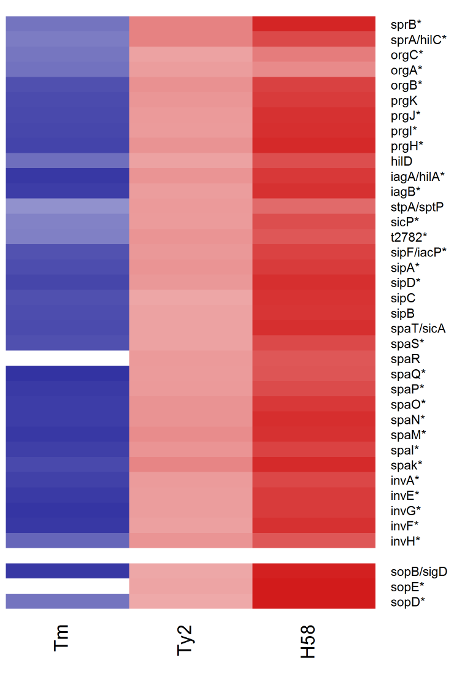
Abstract: Salmonella enterica serovars Typhi and Typhimurium cause typhoid fever and gastroenteritis respectively. A unique feature of typhoid infection is asymptomatic carriage within the gallbladder, which is linked with S. Typhi transmission. Despite this, S. Typhi responses to bile have been poorly studied. RNA-Seq of S. Typhi Ty2 and a clinical S. Typhi isolate belonging to the globally dominant H58 lineage (129-0238), as well as S. Typhimurium 14028, revealed that 249, 389 and 453 genes respectively were differentially expressed in the presence of 3% bile compared to control cultures lacking bile. fad genes, the actP-acs operon, and putative sialic acid uptake and metabolism genes (t1787-t1790) were upregulated in all strains following bile exposure, which may represent adaptation to the small intestine environment. Genes within the Salmonella pathogenicity island 1 (SPI-1), encoding a type IIII secretion system (T3SS), and motility genes were significantly upregulated in both S. Typhi strains in bile, but downregulated in S. Typhimurium. Western blots of the SPI-1 proteins SipC, SipD, SopB and SopE validated the gene expression data. Consistent with this, bile significantly increased S. Typhi HeLa cell invasion whilst S. Typhimurium invasion was significantly repressed. Protein stability assays demonstrated that in S. Typhi the half-life of HilD, the dominant regulator of SPI-1, is three times longer in the presence of bile; this increase in stability was independent of the acetyltransferase Pat. Overall, we found that S. Typhi exhibits a specific response to bile, especially with regards to virulence gene expression, which could impact pathogenesis and transmission.
Full Text
Citation: Rebecca Johnson, Matt Ravenhall, Derek Pickard, Gordon Dougan, Alexander Byrne and Gad Frankel. Comparison of Salmonella enterica serovars Typhi and Typhimurium reveals typhoidal-specific responses to bile. Infection and Immunity. 2017. doi:10.1128/IAI.00490-17